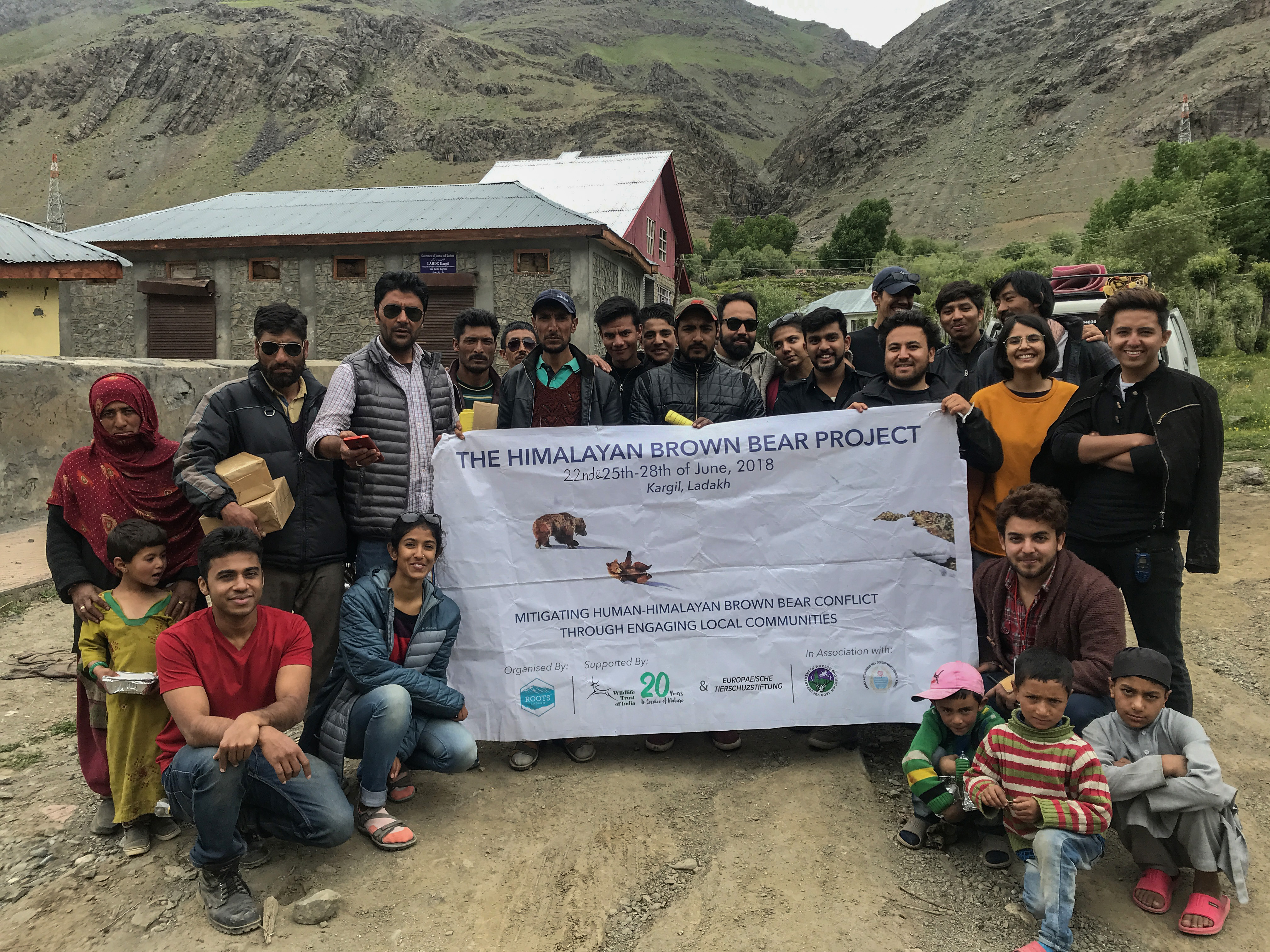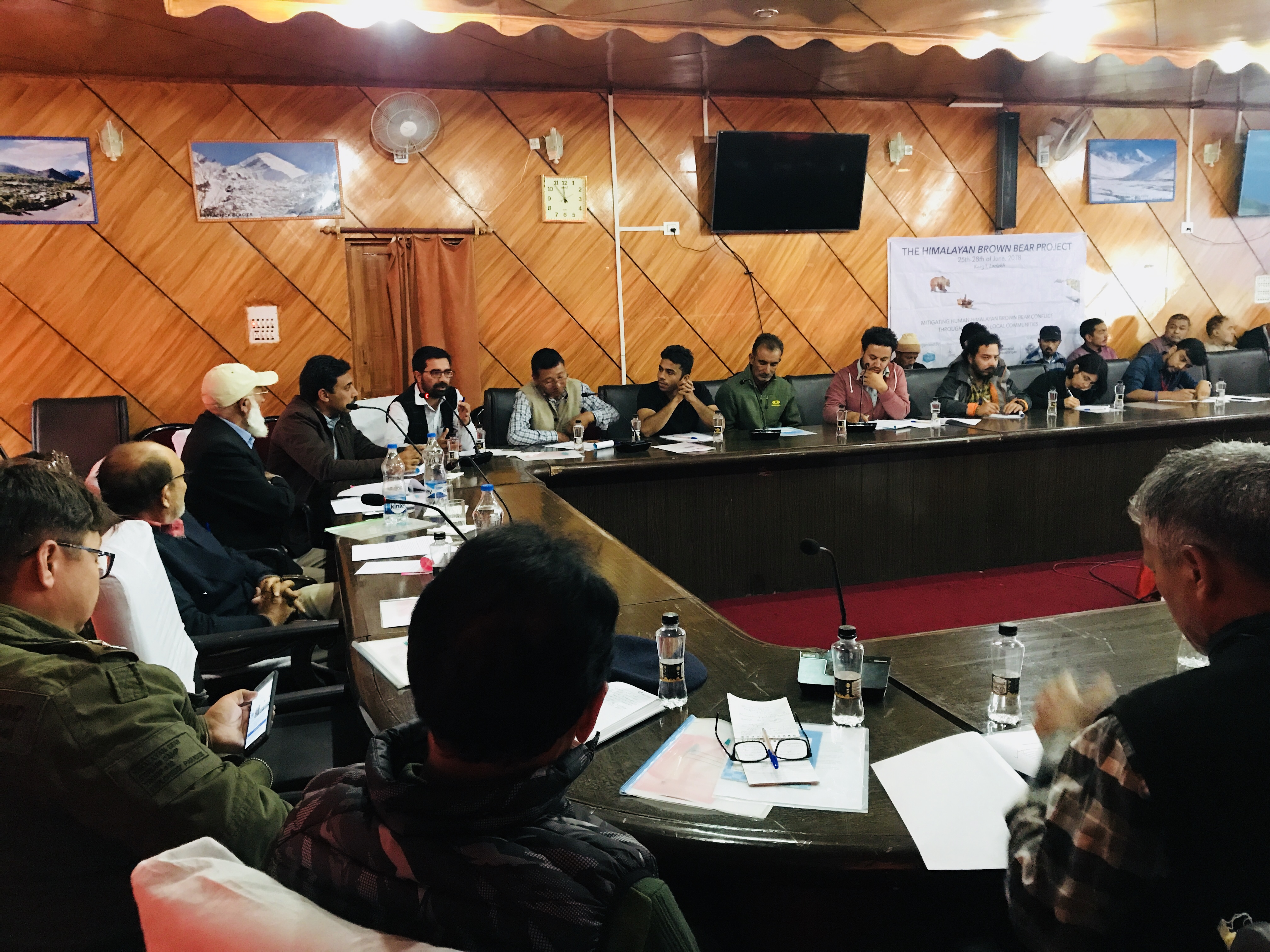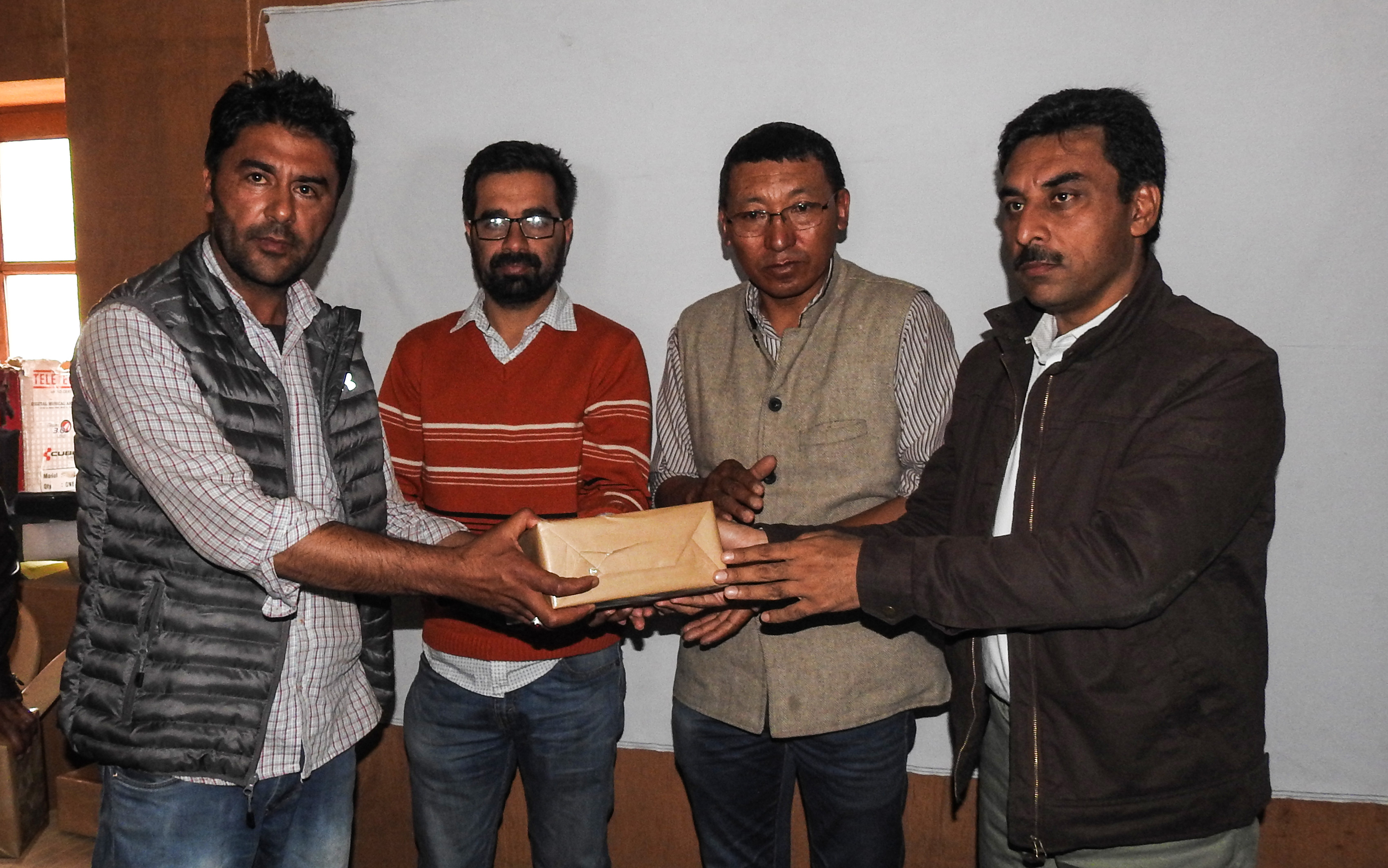Mitigating Human-Himalayan Brown Bear Conflict- communities play a role
Jan 1 , Drass, Kargil : Around the world, the communities are on the front line of conservation. Using their traditional knowledge of nature, they are the stewards of biodiversity. Community involvement in conservation efforts is a holistic approach that Wildlife Trust of India believes in.
WTI along with the support of ETS through the Local organisation ROOTS initiated a Rapid Action Project in two villages, Hulyal and Mushkow in Drass to address the Human-bear conflict and conserve the existing population of Himalayan Brown Bears.

Himalayan Brown Bear (Ursus arctos isabellinus) known as “Dren-Mo” in Bhoti or Bodhi language (local language of Ladakh and Tibet), is one of the most ancient of brown bear lineages. This Critically Endangered Species (as per the IUCN Redlist) is confined to three major mountain ranges, the Hindu Kush, the Karakoram and the Western Himalayas. The species was once widely spread across Nepal, Tibet, Bhutan, India and Pakistan, unfortunately, their numbers today are not very promising. In India, very little is known about the status of the species in the states of Jammu & Kashmir, Himachal Pradesh and Uttarakhand. In Kargil district of J&K, Himalayan Brown Bear has been frequently sighted, especially in the last five-six years. With most sightings close to human settlements, reports of Human-Bear conflict have increased, particularly in Drass, Suru and Wakha-Mulbekh Region. Locally, it is believed that shrinking of breeding grounds have been forcing the bears to travel to lower reaches of Drass in search of food and attack livestock. This annual growth in the number of conflict attacks on livestock and humans has created a sense of fear amongst the local people leading to retaliatory killings of bears too.
As not much data was available on the numbers of Himalayan Brown Bears and their habitat size in Kargil, to understand the issue of conflict in Drass, through this RAP Villagers and affected households were interviewed to look into the reasons for livestock attacks and the challenges faced by authorities with respect to the species. With over 150 livestock depredated every year, the locals were reasonably agitated about losing their high-value assets such as horses, cows, Zo (female Yak), Yak, which cost over Rs 50,000/- in terms of market value, to these wild predators. Since 2016, the value of livestock depredation caused by Brown Bears has contributed to more than 70% of the total value of livestock depredation.

Extensive surveys and meetings with the communities indicated overgrazing, poor garbage management in the villages and Military Camps. Lack of concrete infrastructures for livestock as some of the main causes of conflict in the area. Brown bears are found to hibernate from November to March but possibly due to climate change, there have been shorter winters and longer summers disturbing their hibernation cycle. There were reports of bears coming to lower reaches during late December and early March and even during peak summer months June to August.
This urged the need for sensitising village communities and educating them on methods to avoid conflict and understanding their role in conservation. Regular meetings with the local stakeholders were conducted and community youth were involved in monitoring the areas to tackle human-animal conflict. The selected youth from the community were briefed on their role as members of the Community Wildlife Watch and were divided into groups. The objective of forming this committee was to create a more efficient model for conflict management, real-time reporting and crowd-control management giving the bears safe passage. Resolutions were signed by the team members to carry out this monitoring work. Binoculars and Powerful searchlights were distributed to them to help safeguard their livestock and monitor Brown Bear movement. Post-workshop and distribution of equipment the community had gained a greater sense of ownership and responsibility. They have been meticulously monitoring the Himalayan brown bear movement near their villages and have prevented at least 4 attacks on livestock. They have also been sharing photographs and videos of these incidents. We have entrusted the youth to carry out the activities with the same momentum in future.
As part of community sensitization workshop, a total of 40 people from Huliyal and 100 people from Mushkow including village elders, youth, children and staff from the Department of Wildlife participated in the event. Mr.Intesar Suhail ( Warden, South Kashmir), Field Researcher Mr.Karma Sonam and Mr.Riyaz Ahmed from WTI addressed the participants on the Wildlife diversity of Kargil and the presence of Himalayan Brown Bears in the area. Reasons for Human-Animal Conflict issues and measures to be taken to mitigate the conflict via community involvement by introducing community livestock insurance programs were stressed upon by the speakers. The speakers also shared their wildlife experiences and the benefits of wildlife eco-tourism to help motivate the community.
Workshops were conducted for students in the villages with the aim to instil a sense of pride and appreciation towards nature and conservation. Four Government Schools with a student strength of 135 children, 19 teachers and few parents participated in the programme. The Zonal Education Officer and Commanding officer of a local army unit presided over the event as special guests. An Art competition titled “Wildlife of Kargil” and an elocution competition on the topic “Importance of Wildlife” was organised to engage the children. The enthusiastic students of High School Kaksar presented a dramatic skit titled “Planet Earth’s Pain” emphasizing on the destruction and harm planet Earth faces today.
To further engage the district and wildlife Authorities of the area a panel discussion was organised to understand the needs and challenges faced with respect to Himalayan Brown bear conservation. The action points derived from the meeting further helped in finding sustainable solutions to tackle the problems of Human-bear conflict in the region.
All local authorities who were part decision-makers were invited for a panel discussion in Baroo, Kashmir to understand the needs, challenges and strategies for conflict mitigation, and policy drafting for a community-led conservation program”. An exclusive documentary created by the team focusing on the issue of Human-Himalayan brown bear conflict was also screened at the event. The Stakeholder workshop was chaired by the Chief Executive Councillor and Deputy Commissioner of Kargil District Council. The District Police Authority, Council Advisor, Chief Education Officer, Range Officer of Wildlife Department, Social Activists and Media persons also participated.
The local administration appreciated the initiative of WTI and assured long-term support and involvement in this conservation project.
A detailed proposal of the same key points and project results shall be submitted to the authorities for long-term conservation plan in the landscape. We hope this intervention will help secure the species and address conflict in the Kargil District.








